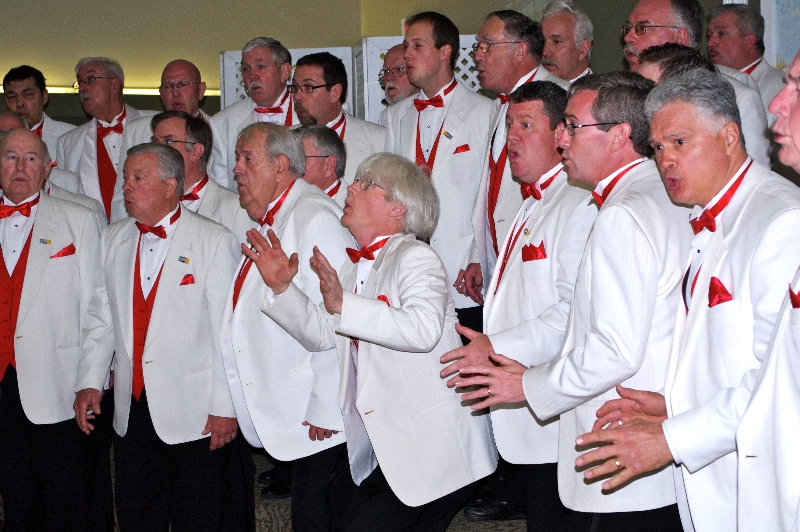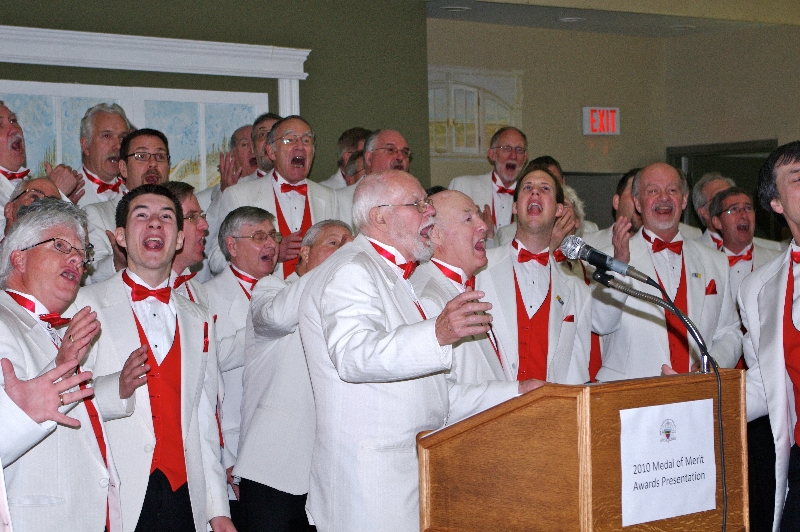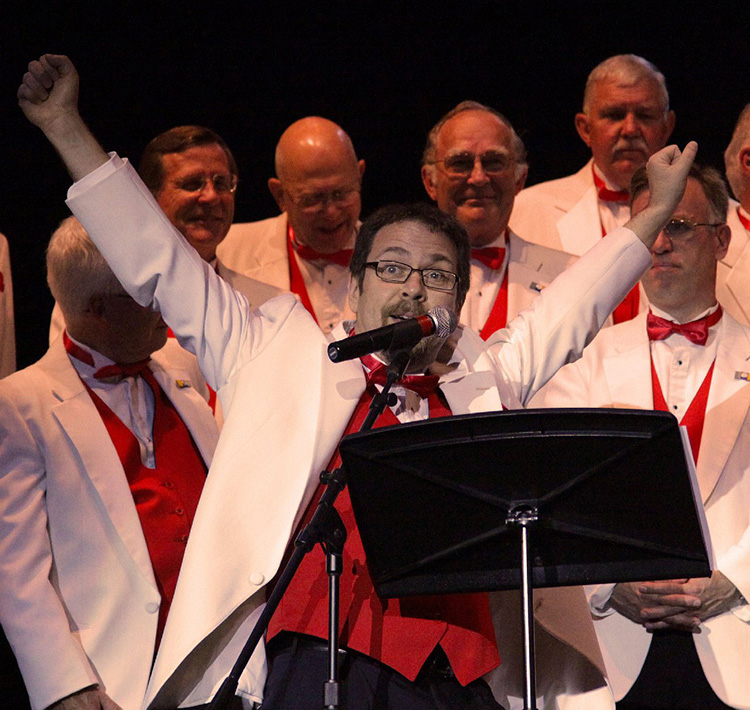What is Barbershop?
Here's a Good Place to Start:
Deke Sharon's Article on Barbershop
 Deke Sharon founded CASA (Contemporary A Cappella Society), makes TV shows ("The Sing-Off"), movies ("Pitch Perfect"), sings (The House Jacks), produces albums (Straight No Chaser, Street Corner Symphony, Committed, Nota, Bubs), wrote a book (A Cappella Arranging), publishes sheet music (Hal Leonard),and custom arranges music (over 2,000 songs).
Deke Sharon founded CASA (Contemporary A Cappella Society), makes TV shows ("The Sing-Off"), movies ("Pitch Perfect"), sings (The House Jacks), produces albums (Straight No Chaser, Street Corner Symphony, Committed, Nota, Bubs), wrote a book (A Cappella Arranging), publishes sheet music (Hal Leonard),and custom arranges music (over 2,000 songs).
In this article, Barbershop: A Cappella's Martial Art, he explains his view of Barbershop singing. It's a fascinating read!
Barbershop: Generally Speaking...
Barbershop-style singing originated in the U.S. between 1890 and the 1920s, and was revived beginning in 1938 with the formation of “The Society for the Preservation and Encouragement of Barbershop Quartet Singing in America” in Tulsa, Oklahoma. Starting as an all-male quartet style, barbershop has expanded beyond the quartet and is now sung in choruses of all sizes as well as by all-women and mixed-voice quartets and choruses. Barbershop always has four parts: tenor, lead, baritone & bass. Songs chosen to be sung in this style generally have easy-to-sing audience-friendly melodies, wholesome themes and heart-felt emotions.
The hallmark of the style is 4-part harmony arranged such that the melody is surrounded above and below by the three harmony parts. It is sung unaccompanied by musical instruments. The lead sings the melody with the tenor singing above him and the bass below. The baritone sings a compromise part unique to barbershop, sometimes above the lead and sometimes below. Placing the melody in a middle voice as opposed to either the top or the bottom of the chord is what distinguishes barbershop from other forms of vocal harmony. From the highest tenor to the lowest bass, man or woman, the style offers everyone the opportunity to sing, whatever their vocal range.
Many different types of music are adaptable to the barbershop style, from traditional hymns and southern gospel through to doo-wop, swing and show tunes. While choruses typically mix popular songs into their repertoire, the style is often associated with songs from an earlier era, when songwriters tended to write lyrics that told a story, set to melodies that invited harmony, and sung from the heart. These familiar songs were mostly written between 1900 and 1970. Our chorus tends to sing a lot of songs from the '60's (our director seems to be fond of the music of that era). Many popular songs written since then have been successfully adapted to be sung in the barbershop style.
Barbershop: Technically Speaking...
Barbershop harmony is a style of unaccompanied vocal music characterized by consonant four-part chords for every melody note in a predominantly homophonic texture. The melody is consistently sung by the lead, with the tenor harmonizing above the melody, the bass singing the lowest harmonizing notes, and the baritone completing the chord.
The melody is not sung by the tenor except for an infrequent note or two to avoid awkward voice leading, in tags and codas, or when some appropriate embellishing effect can be created. Occasional brief passages may be sung by fewer than four voice parts. Occasionally, any of the voice parts may sing extended passages of the melody but such songs are rare. It's not unheard of for the bass (eg. on "16 Tons") or the tenor (on "MLK") to have the melody for the entire song! Baritones are never allowed to do this! (OK it's happened once, on the tune "Baritone Blues").

Barbershop music features songs with understandable lyrics and easily singable melodies whose tones clearly define a tonal center and imply major and minor chords and Barbershop (dominant and secondary dominant) seventh chords that resolve primarily around the circle of fifths, while making frequent use of other resolutions. Barbershop music also features a balanced and symmetrical form, and a standard meter.
The basic song and its harmonization are embellished by the arranger to provide support of the song's theme and to close the song effectively. Barbershop singers adjust pitches to achieve perfectly tuned chords in just intonation while remaining true to the established tonal center.
Artistic singing in the Barbershop style exhibits a fullness or expansion of sound, precise intonation, a high degree of vocal skill and a high level of unity and consistency within the ensemble. Ideally, these elements are natural, unmanufactured and free from apparent effort.
The presentation of Barbershop music uses appropriate musical and visual methods to convey the theme of the song and provide the audience with an emotionally satisfying and entertaining experience. The musical and visual delivery is from the heart, believable, and sensitive to the song and its arrangement throughout. The most stylistic presentation artistically melds together the musical and visual aspects to create and sustain the illusions suggested by the music.
Barbershop: Universally Speaking... is just plain FUN...
...And you can do it too!

 Barbershop is fun! Isn't that right, Mark?
Barbershop is fun! Isn't that right, Mark?
The Barbershop Harmony Society
The Barbershop Harmony Society, legally and historically named the Society for the Preservation and Encouragement of Barber Shop Quartet Singing in America, Inc. (SPEBSQSA), is the first of several organizations to promote and preserve barbershop music as an art form. Founded by Owen C. Cash in 1938, the organization quickly grew, promoting barbershop harmony among men of all ages. As of 2012, just under 25,000 men in the United States and Canada are members of this organization whose focus is on a cappella music. The international headquarters was in Kenosha, Wisconsin for fifty years before moving to Nashville, Tennessee in 2007.
Here's a link for more info:
Barbershop Harmony Society main website - Learn all about the organization.


